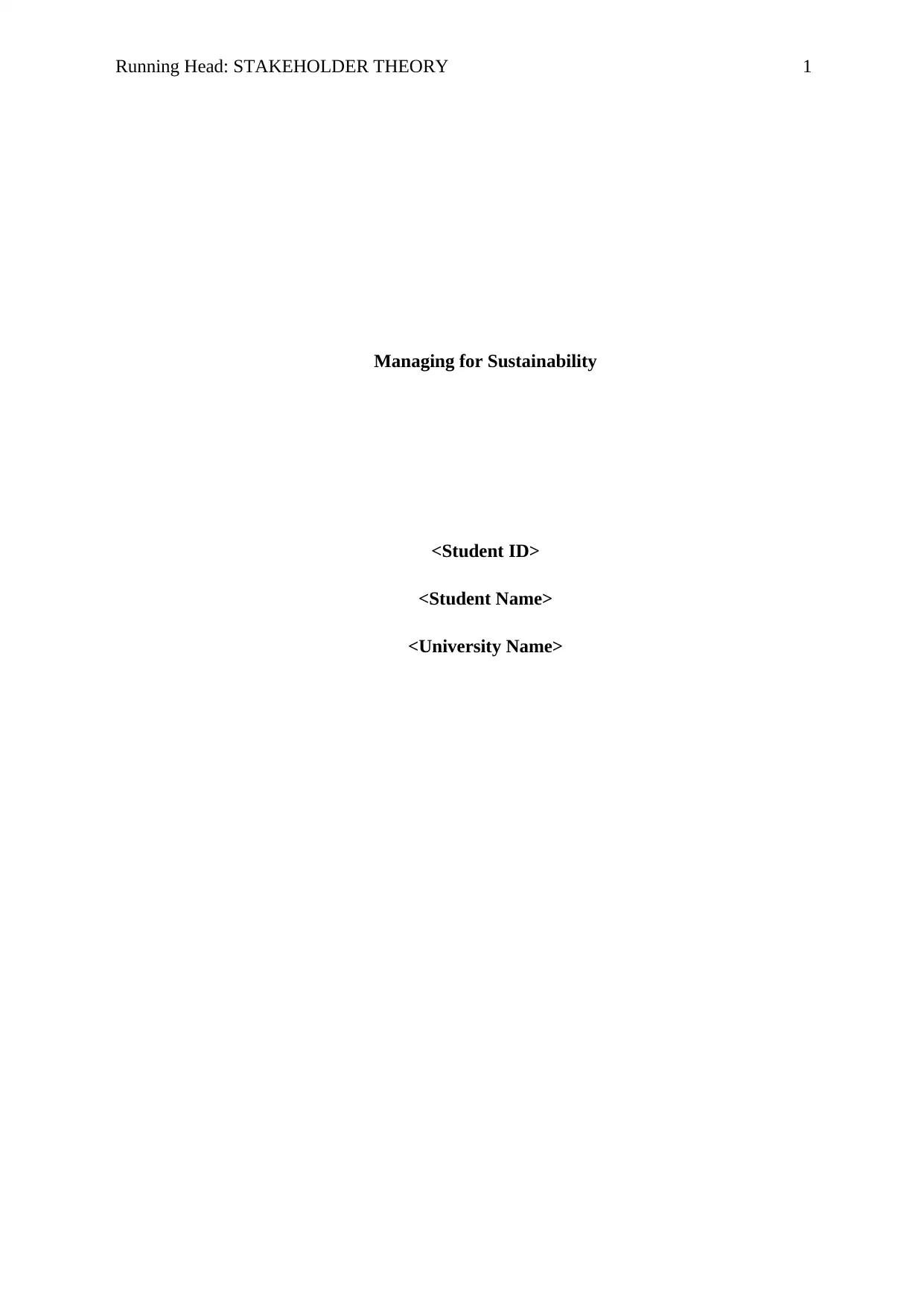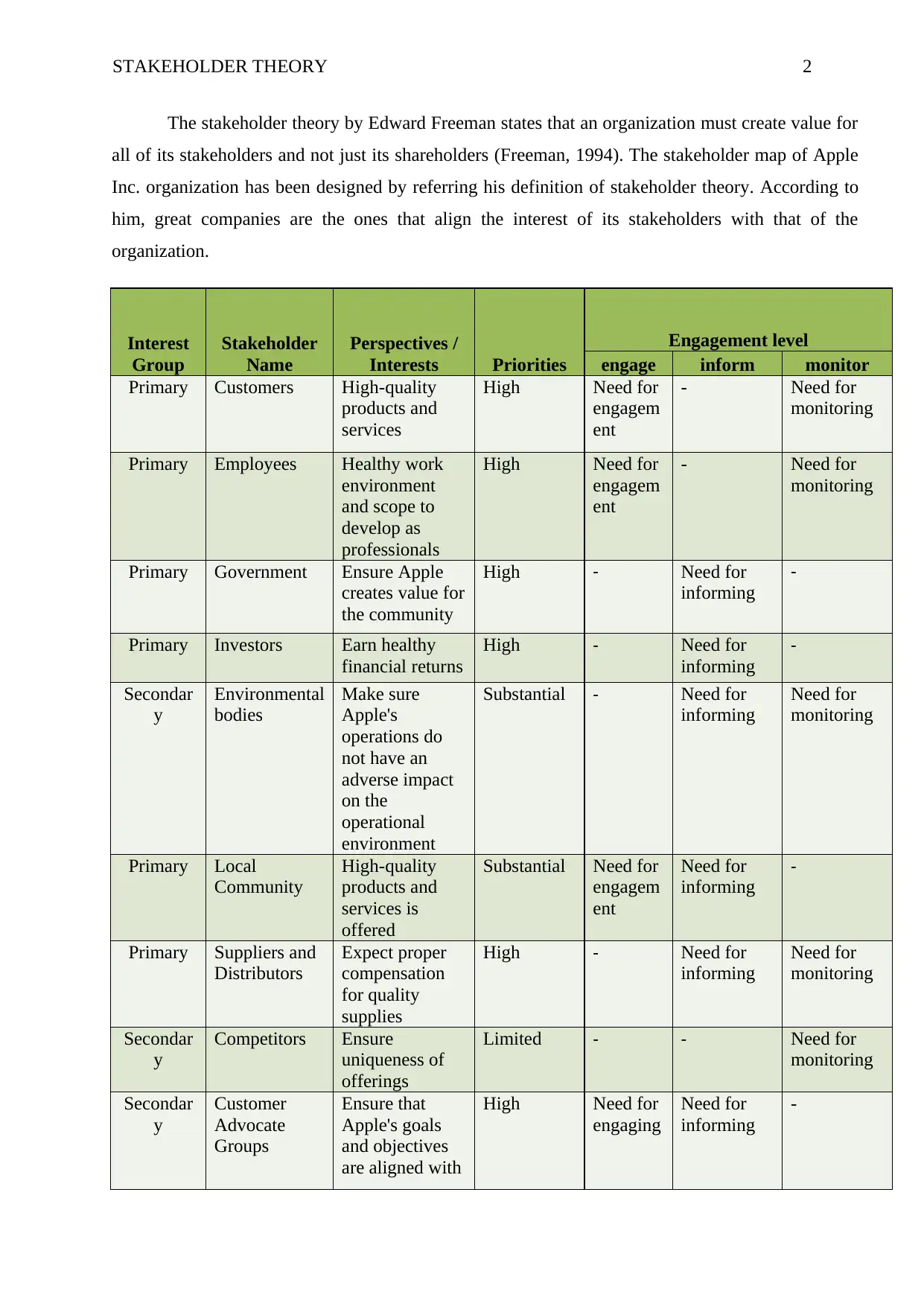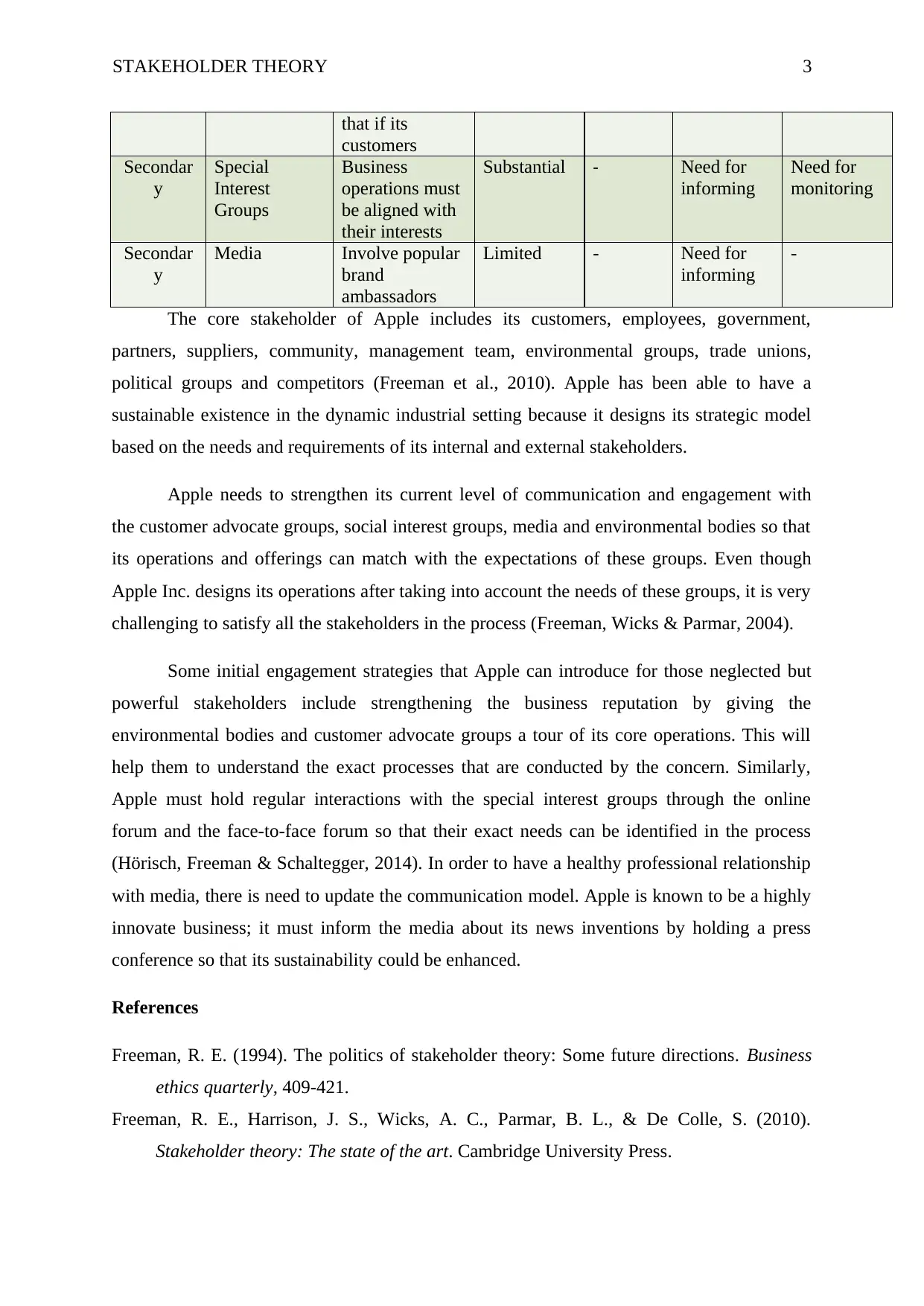Managing for Sustainability: Stakeholder Theory Report for Apple Inc.
VerifiedAdded on 2021/04/17
|4
|745
|165
Report
AI Summary
This report provides an analysis of Apple Inc. through the framework of stakeholder theory, as defined by Edward Freeman. It examines Apple's stakeholder map, categorizing stakeholders by their interests and engagement levels (primary and secondary). The analysis identifies core stakeholders including customers, employees, government, investors, environmental bodies, local community, suppliers, and competitors. The report emphasizes the importance of aligning stakeholder interests with organizational goals for sustainable business practices. It highlights the need for Apple to strengthen communication and engagement with customer advocate groups, special interest groups, media, and environmental bodies. The report suggests engagement strategies such as tours of core operations, online forums, face-to-face interactions, and press conferences to enhance relationships and address stakeholder expectations. The conclusion acknowledges the challenges of satisfying all stakeholders but underscores the value of proactive engagement for long-term sustainability. The report is supported by relevant academic references.
1 out of 4










![[object Object]](/_next/static/media/star-bottom.7253800d.svg)